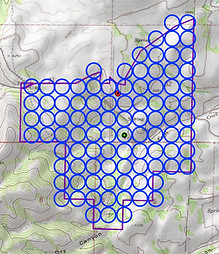
HumTrack
HumTrack is an international collaborative program trying to unravel the mysteries of hummingbird movement geographically over time using solar transmitters weighing less than a grain a rice. During the initial experimental phase, we conducted our first field tests in Kentucky on a few breeding Ruby-throated Hummingbirds. This field test was successful in determining the safety of "glue-on" protocols for hummers. Glue-on attachment is just what it sounds like - the process of glueing a transmitter to the back of a hummingbird in a very specific spot. When done correctly, our study showed no measurable effects of attaching these transmitters. The birds that had nests in the area were still able to hold territory and fight off competition for feeders.
WHY??????
The answer comes down to conservation of hummingbird species and has broader impacts across the ecological spectrum.
-Let's take Rufous Hummingbirds (a declining population) for example. Using these transmitters, we hope to determine with fairly good accuracy what an individuals territory is, how it overlaps with other individuals and exactly what locations those territories encompass. By knowing the extent of their territories on the breeding and wintering grounds, we can better conserve crucial habitat from development.
This is just one example of an extremely valuable use case that could help conserve Rufous Hummingbird populations for future generations of hummer lovers. We hope after considerable testing, these transmitters will be used to monitor hummingbirds as they migrant across the entire continent!




Make a donation
As a volunteer run non-profit, every penny raised goes straight toward our research and outreach efforts. We appreciate your consideration in supporting our cause!
Frequency
One time
Monthly
Amount
$20
$50
$100
Other
Our Hummingbird Research
"Hummer Hosts" help us with this research by reporting hummingbirds that are observed at their feeders between November 15th through March 1st. If you have a hummingbird during this time, please let us know! Either us or another bander will come and band it. We tell folks to keep at least one feeder out during the winter. The feeder does not keep birds from migrating, rather, the feeder is attracting a bird to your house that is already in the area. Most winter hummingbirds appear in the middle of the winter season in December-February.
Hummingbird bands are super small but that does not stop some folks to report bands through photos without us having to recapture the bird. This male Rufous Hummingbird (Below) was reported by someone in Texas in October of 2021. Emma our director banded this bird December 5th in 2020 in Mobile, Alabama.

Every winter in the Southeastern U.S., a few individual hummingbirds (instead of making the "typical" southward movement to Mexico) will fly eastward where they will overwinter somewhere in the Southeastern U.S. More often than not, they are comprised of western species such as Rufous Hummingbirds and Black-chinned Hummingbirds in addition to several other species. Winter hummingbird research has been happening for decades, making us juniors to our mentors and colleagues respectively. Currently, we volunteer our time to help Fred Bassett of Hummingbird Research, Inc. to band as many winter hummingbirds as possible, to help record the current history of these tiny birds and how their migration patterns are shifting.

A female Buff-bellied Hummingbird banded by Emma and Kyle in Foley, Alabama in November 2020. While the Ruby-throated Hummingbird is the only hummingbird that breeds east of the Mississippi River, we observe other species of hummingbirds in the Southeast, many of which are species normally found in the western U.S.
Hummingbird Bands have one letter and 5 number digits. The bands act like a social security number for birds. Photo credit: Harlan Stewart.
Here is a list of hummingbird banders you can contact in the southeastern US.
All of Alabama, Georgia and Florida
Kyle Shepard- kyle@bandingcoalition.org or 251-269-6527
Tallahassee FL and southern Georgia
Fred Dietrich- fdietrich@gmail.com or 448-229-6111
Southern Mississippi from I-20 south and the Atlanta, GA area
Emma Rhodes- emma@bandingcoalition.org or 251-597-4782
Northern Mississippi from US-82 North and Middle and West Tennessee
Cyndi Routledge- routledges@bellsouth.net or 931-206-3517






